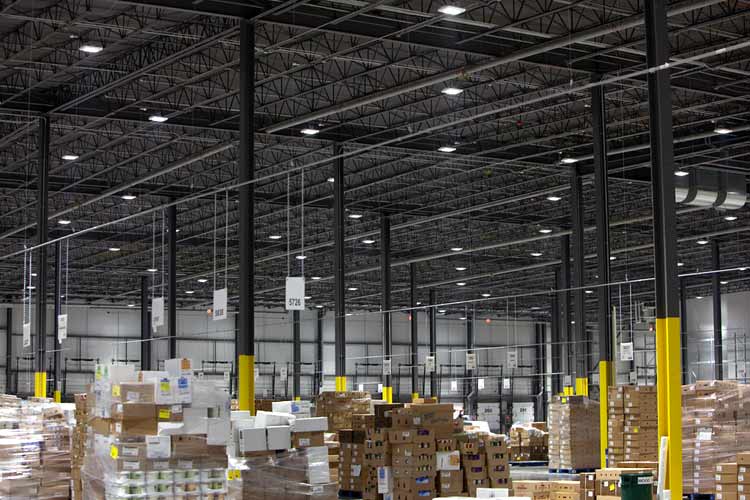
In a country like India, the main concentration nowadays is on energy efficiency and effectivity. Stress is laid on replacing HPSV lights and fluorescent tube lights with LED lights. All plants and industries that are running 24 x 7 should focus on taking the step towards operating in an energy-efficient manner by using LED lights instead of HPSV lights and fluorescent tube lights.
It is observed that a 70 Watt HPSV light is expected to take around 0.3-0.4 Amp but it takes around 0.7-0.8 Amp current due to the presence of choke with Power Factor around 0.9-0.92 (if the capacitor is there). Also, it was observed that an equivalent LED light for 70 W HPSV is 40 Watt and it takes around 0.18-0.22 Amp with PF 0.98 -0.99 and lumens more than 70 Watt HPSV with the only difference of colour. These observations were made using the same clamp meter, energy meter, and lux meter. Similarly, 150, 250, 400 Watt HPSV lights were checked.
Keeping the target of replacing all those lights that were running 24 x 7 in mind and getting faster paybacks and savings in return, 70 Watt HPSV lights and 40/36 Watt fluorescent tube-lights were replaced with 40 Watt LED lights and 20 Watt LED tubes. Such changes prove beneficial for the industries that are taking power from the grid and paying demand charges. For example, if you replace 100 number of 70 W HPSV with 40 W LED lights and 200 number of 36 W tube-lights with 20 W LED rods that are running 24 x 7. The direct saving is 30 Watt X 100 = 3 kW and 16 Watt x 200 = 3.2 kW which means the reduction of 6.2 kW or 6 KVA demand.
With the increase in the number of replacements, demand comes down and so there is an increase in savings. Suppose the demand comes down by 5 KVA and per KVA demand is Rs 300 per KVA, it means there will be savings of around Rs 1500 per month and around Rs 18000 per year.
Payback period calculation of LED lights against HPSV lights and fluorescent tube-lights is less than 2 years for lights that are running 24 x 7.
Various locations where replacement with LED will benefit industries are
1) CCR, Admin offices, lubrication rooms, load centres or substations where florescent tube-lights can be replaced with LED tube lights that run 24 x 7. 36 / 40 Watt can be easily replaced with 18/20 Watt.
2) Cable cellar and transformer rooms.
3) Enclosed rooms like compressor rooms, electrical or mechanical workshops or enclosed rooms like packing plants, etc.
4) Inside Silos where semi-finished or finished material is stored.
Benefits of LED lights other than load reduction
1. Lighting load with same lumen i.e. 70 Watt HPSV = 35-40 Watt LED, 150 Watt HPSV = 70-80 Watt LED, 250 Watt HPSV = 120-150 Watt LED will reduce. Moreover, less wattage and no use of choke, ignitor and capacitor will lead to the reduction in current and copper loss I(Sqr)X resistance. This will lead to the reduction of the KVA requirement of lighting transformers.
2. No use of choke, ignitor, and capacitor that generally need to be changed every 2 years will lead to a reduction in maintenance cost. Besides, LED lights come with a guarantee of 2-3 years depending on the manufacturer. Moreover, there are lesser harmonics in the power system too as choke, ignitor, and the capacitor is not there in LED lights.
3. Compared to HPSV lights that are hot, LED lights are cool. If HPSV light is kept on for more than 10 - 20 minutes, you will not be able to touch it as it produces heat, LED light, on the other hand, is cool light and eco-friendly too.
4. The running cost is reduced that directly results in the reduction of KWH/tonne of the finished product.
5. LED lights work at voltage range from 90 – 300 volts due to which there is less fluctuation of voltage and minimal failure chances.
About the Author
 Avinash Singh is an Electrical Engineer with over 11 years of rich experience in Electrical Maintenance, Installation, Testing, and Commissioning of all major Electrical equipments. He is specialized in bringing down Energy Cost of a Plant by reducing electricity bills and increasing energy efficiency. He also reduces plant breakdown cost by implementing proper maintenance activities during routine and shutdown. Through these Case Studies he shares his experience and challenges faced in his work routine with the readers of Circuit Digest.
Avinash Singh is an Electrical Engineer with over 11 years of rich experience in Electrical Maintenance, Installation, Testing, and Commissioning of all major Electrical equipments. He is specialized in bringing down Energy Cost of a Plant by reducing electricity bills and increasing energy efficiency. He also reduces plant breakdown cost by implementing proper maintenance activities during routine and shutdown. Through these Case Studies he shares his experience and challenges faced in his work routine with the readers of Circuit Digest.





